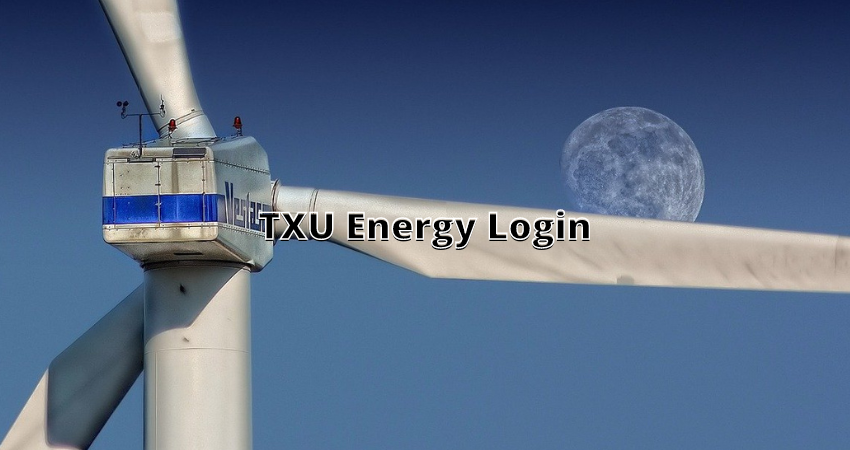How Does ATP Provide Energy to a Cell
ATP (adenosine triphosphate) is a molecule that stores and provides energy for cellular processes. When ATP is broken down into ADP (adenosine diphosphate) and inorganic phosphate, energy is released. This energy can be used by the cell to drive various processes, including metabolic reactions, muscle contractions, and active transport across cell membranes.
How Does ATP Provide Energy to a Cell
The breakdown of ATP into ADP and inorganic phosphate is catalyzed by an enzyme called ATPase. This reaction is exergonic, meaning that it releases energy. The released energy can be used directly by the cell or stored for later use.
ATP is produced by the cell through the process of cellular respiration, which involves the breakdown of glucose and other organic molecules in the presence of oxygen. During cellular respiration, the energy released from the breakdown of glucose is used to produce ATP through a series of chemical reactions.
Overall, ATP provides energy to a cell by releasing energy when it is broken down into ADP and inorganic phosphate. This energy can then be used by the cell to power various processes.
How Does Atp Provide Energy to a Cell
The energy released during the breakdown of ATP is used to power endergonic (energy-requiring) reactions within the cell. For example, during the process of muscle contraction, myosin, a motor protein, binds to actin filaments and uses the energy released from ATP hydrolysis to generate force and cause movement.
ATP is produced by the cell through the process of cellular respiration, which involves the breakdown of glucose and other organic molecules in the presence of oxygen. During cellular respiration, the energy released from the breakdown of glucose is used to produce ATP through a series of chemical reactions.
Overall, ATP provides energy to a cell by releasing energy when it is broken down into ADP and inorganic phosphate, which can be used to power various cellular processes.
How Does ATP Store And Provide Energy For The Cell?
The ATP molecule is made up of three phosphate groups, a ribose sugar, and an adenine base. The bonds between the phosphate groups are high-energy bonds, and breaking them releases energy.
When the cell needs energy to perform a task, the ATP molecule is broken down into ADP (adenosine diphosphate) and inorganic phosphate by the enzyme ATPase. This reaction releases energy that can be used by the cell to power various processes.
The energy released during the breakdown of ATP is used to power endergonic (energy-requiring) reactions within the cell. For example, when a muscle cell contracts, ATP is used to generate the force necessary for movement.
ATP is produced by the cell through the process of cellular respiration, which involves the breakdown of glucose and other organic molecules in the presence of oxygen. During cellular respiration, the energy released from the breakdown of glucose is used to produce ATP through a series of chemical reactions.
Overall, ATP stores energy in its high-energy phosphate bonds and provides energy to the cell by releasing that energy when it is broken down into ADP and inorganic phosphate. This energy can be used by the cell to perform various tasks, such as synthesizing macromolecules, transporting molecules across membranes, and contracting muscle fibers.
How Do Atp Molecules Provide Energy For Cellular Activities
The energy stored in ATP is primarily located in the bonds between the phosphate groups. When one of these phosphate groups is removed, a significant amount of energy is released, which can be harnessed by the cell to perform various functions such as cellular movement, transport, and chemical synthesis.
For example, in muscle cells, ATP is broken down to provide the energy needed for muscle contraction. The energy released during ATP hydrolysis drives the movement of the muscle fibers.
Similarly, in active transport, ATP is used to move molecules or ions against their concentration gradient across cell membranes. The energy from ATP hydrolysis provides the energy needed to move the molecule or ion against the gradient.
ATP is produced by the cell through cellular respiration, a metabolic process that occurs in the mitochondria. During cellular respiration, energy is harvested from nutrients such as glucose and stored in ATP molecules.
Overall, ATP provides energy for cellular activities by breaking down into ADP and inorganic phosphate, releasing energy that can be used by the cell to perform work.
How Does Atp Provide Energy To The Cell
The energy released during the breakdown of ATP is used to power endergonic (energy-requiring) reactions within the cell. For example, during muscle contraction, myosin, a motor protein, binds to actin filaments and uses the energy released from ATP hydrolysis to generate force and cause movement.
ATP is produced by the cell through the process of cellular respiration, which involves the breakdown of glucose and other organic molecules in the presence of oxygen. During cellular respiration, the energy released from the breakdown of glucose is used to produce ATP through a series of chemical reactions.
Overall, ATP provides energy to the cell by releasing energy when it is broken down into ADP and inorganic phosphate, which can be used to power various cellular processes. The energy stored in ATP is readily available and can be rapidly accessed by the cell as needed.
How Does Atp Give Energy To The Cell
The transfer of energy from ATP to other molecules occurs through the transfer of a phosphate group from ATP to another molecule. This transfer is catalyzed by enzymes, which facilitate the transfer of the phosphate group and the associated energy release.
The energy released during the breakdown of ATP is used to power endergonic (energy-requiring) reactions within the cell. For example, during muscle contraction, the energy released from ATP hydrolysis powers the movement of myosin, a motor protein that binds to actin filaments and generates force.
ATP is produced by the cell through the process of cellular respiration, which involves the breakdown of glucose and other organic molecules in the presence of oxygen. During cellular respiration, the energy released from the breakdown of glucose is used to produce ATP through a series of chemical reactions.
Overall, ATP gives energy to the cell by releasing energy stored in its high-energy phosphate bonds, which can be transferred to other molecules to power various cellular processes. This enables the cell to carry out various functions, including synthesizing macromolecules, transporting molecules across membranes, and contracting muscle fibers.
How Does Atp Provide Energy For Cells
The transfer of energy from ATP to other molecules occurs through the transfer of a phosphate group from ATP to another molecule. This transfer is catalyzed by enzymes, which facilitate the transfer of the phosphate group and the associated energy release.
The energy released during the breakdown of ATP is used to power endergonic (energy-requiring) reactions within the cell. For example, during muscle contraction, the energy released from ATP hydrolysis powers the movement of myosin, a motor protein that binds to actin filaments and generates force.
ATP is produced by the cell through the process of cellular respiration, which involves the breakdown of glucose and other organic molecules in the presence of oxygen. During cellular respiration, the energy released from the breakdown of glucose is used to produce ATP through a series of chemical reactions.
Overall, ATP provides energy for cells by releasing energy stored in its high-energy phosphate bonds, which can be transferred to other molecules to power various cellular processes. This enables the cell to carry out various functions, including synthesizing macromolecules, transporting molecules across membranes, and contracting muscle fibers.
How Does Atp Provide Energy
The transfer of energy from ATP to other molecules occurs through the transfer of a phosphate group from ATP to another molecule. This transfer is catalyzed by enzymes, which facilitate the transfer of the phosphate group and the associated energy release.
The energy released during the breakdown of ATP is used to power endergonic (energy-requiring) reactions within the cell. For example, during muscle contraction, the energy released from ATP hydrolysis powers the movement of myosin, a motor protein that binds to actin filaments and generates force.
ATP is produced by the cell through the process of cellular respiration, which involves the breakdown of glucose and other organic molecules in the presence of oxygen. During cellular respiration, the energy released from the breakdown of glucose is used to produce ATP through a series of chemical reactions.
Overall, ATP provides energy by releasing energy stored in its high-energy phosphate bonds, which can be transferred to other molecules to power various cellular processes. This enables the cell to carry out various functions, including synthesizing macromolecules, transporting molecules across membranes, and contracting muscle fibers.
How Does Atp Supply Energy For Cellular Activities
ATP (adenosine triphosphate) supplies energy for cellular activities by releasing energy stored in its high-energy phosphate bonds. The transfer of energy from ATP to other molecules occurs through the transfer of a phosphate group from ATP to another molecule. This transfer is catalyzed by enzymes, which facilitate the transfer of the phosphate group and the associated energy release.
The energy released during the breakdown of ATP is used to power endergonic (energy-requiring) reactions within the cell. For example, during muscle contraction, the energy released from ATP hydrolysis powers the movement of myosin, a motor protein that binds to actin filaments and generates force.
ATP is produced by the cell through the process of cellular respiration, which involves the breakdown of glucose and other organic molecules in the presence of oxygen. During cellular respiration, the energy released from the breakdown of glucose is used to produce ATP through a series of chemical reactions.
ATP can supply energy for various cellular activities such as:
- Synthesizing macromolecules such as proteins and nucleic acids
- Transporting molecules across cell membranes through active transport
- Maintaining ion gradients across cell membranes
- Muscle contraction and movement
- Nerve impulse transmission
- Chemical work such as phosphorylation of other molecules
Overall, ATP supplies energy for cellular activities by releasing energy stored in its high-energy phosphate bonds, which can be transferred to other molecules to power various cellular processes. This enables the cell to carry out various functions essential for survival and proper functioning.
Does Atp Provide Energy
The energy released during the breakdown of ATP is used to power endergonic (energy-requiring) reactions within the cell. For example, during muscle contraction, the energy released from ATP hydrolysis powers the movement of myosin, a motor protein that binds to actin filaments and generates force.
ATP is produced by the cell through the process of cellular respiration, which involves the breakdown of glucose and other organic molecules in the presence of oxygen. During cellular respiration, the energy released from the breakdown of glucose is used to produce ATP through a series of chemical reactions.
Overall, ATP provides energy for cellular activities by releasing energy stored in its high-energy phosphate bonds, which can be transferred to other molecules to power various cellular processes.
How Does Atp Provide Energy To Your Body
The transfer of energy from ATP to other molecules occurs through the transfer of a phosphate group from ATP to another molecule. When ATP is broken down into ADP (adenosine diphosphate) and inorganic phosphate, energy is released, which can be used by your cells to perform work.
The energy released during the breakdown of ATP is used to power endergonic (energy-requiring) reactions within your body. For example, during muscle contraction, the energy released from ATP hydrolysis powers the movement of your muscles.
ATP is produced by your body through the process of cellular respiration, which involves the breakdown of glucose and other organic molecules in the presence of oxygen. During cellular respiration, the energy released from the breakdown of glucose is used to produce ATP through a series of chemical reactions.
Overall, ATP provides energy to your body by releasing energy stored in its high-energy phosphate bonds, which can be transferred to other molecules to power various cellular processes. This enables your body to carry out various functions essential for survival and proper functioning, such as maintaining body temperature, carrying out metabolic processes, and supporting physical activity.
Email Bülteni
Yeni yazılarımızdan hemen haberdar olmak için kayıt olun.







